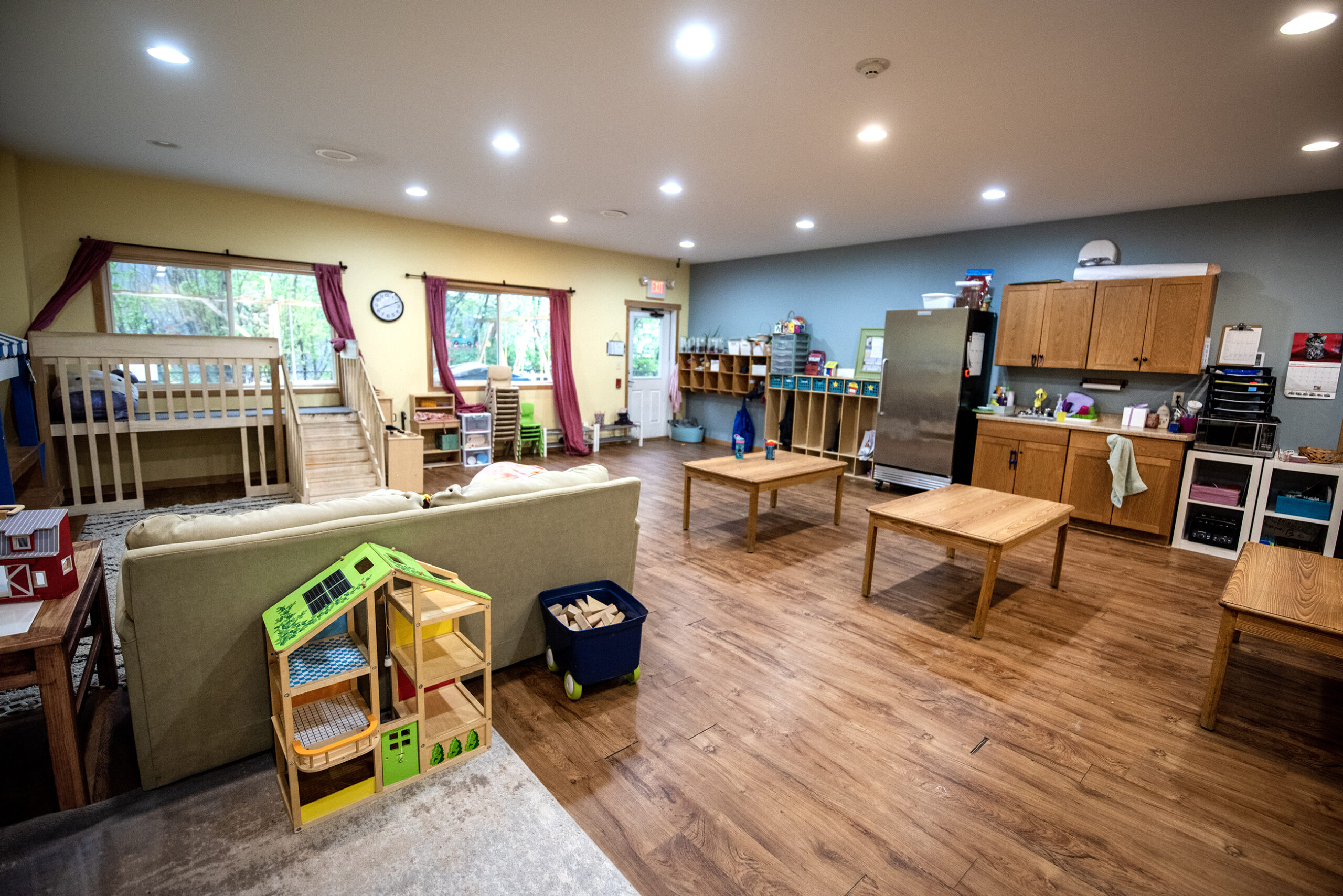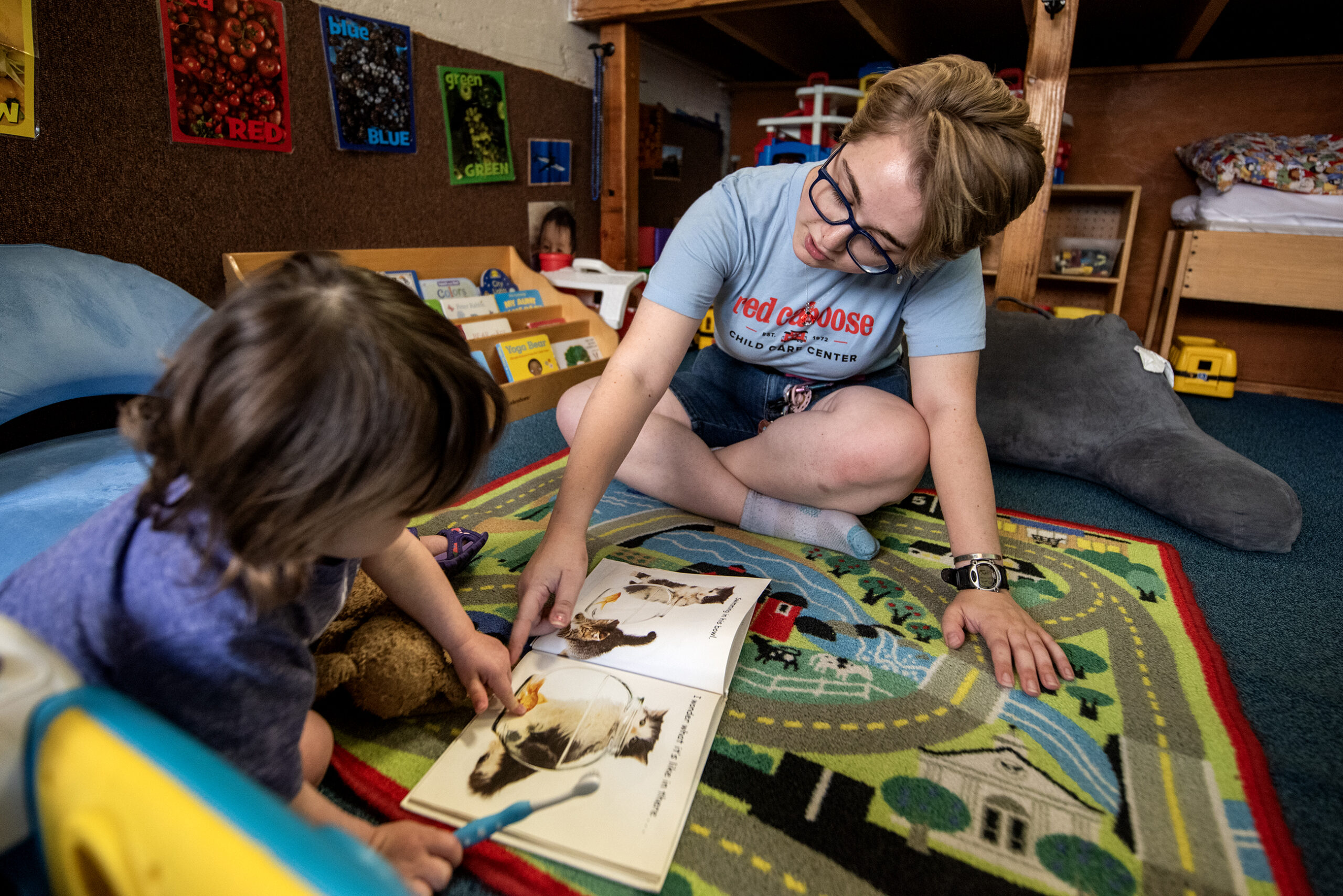When the federal funds that have stabilized Wisconsin’s child care industry end, the state is at risk of losing 2,110 programs, according to a new national report.
Those programs serve more than 87,000 children. Their closure could mean parents will have to leave the workforce.
That could cost Wisconsin more than $232 million in parental wages, found a report from the Century Foundation, a New York-based progressive think tank.
News with a little more humanity
WPR’s “Wisconsin Today” newsletter keeps you connected to the state you love without feeling overwhelmed. No paywall. No agenda. No corporate filter.
The predicted closures would come at a time when Wisconsin is already dealing with a shortage of day care providers that some believe is contributing to the state’s labor shortage.
“Child care funding is not just about the well-being of children and their parents’ ability to work and provide for their families,” said Julie Kashen, a senior fellow at the Century Foundation and an author of the report. “It is also about how employers’ benefit. And having employees fully present in the workforce.”
The federal dollars, called Child Care Counts, are due to shrink significantly this month, and will expire entirely by February 2024.
Democratic Gov. Tony Evers included $340 million in his 2023-25 Wisconsin state budget to stabilize the program, but Republicans cut it from the budget.
Wisconsin Republicans have said they are working on additional legislation to help people open more child care centers. GOP lawmakers voted to set aside $15 million that could be used to create a revolving loan fund for child care providers.
Kashen said that’s not enough.
“Wisconsin’s decision to not fund this, that is going to have huge ripple effects,” Kashen said. “Investing in child care is a win for all. Folks that don’t want to do that are likely trying to send us backwards into a time when we have to continue to rely on the underpaid labor of women — largely women of color.”
Despite the workforce implications, Wisconsin Manufacturers & Commerce, a statewide business lobbying group, has been vocally opposed to funding Child Care Counts. In a tweet, WMC’s Vice President of Government Relations Scott Manley said “subsidizing” child care increases costs.
Representatives from WMC did not respond to requests for comment Wednesday. In the group’s 2023 annual report, WMC addressed the high cost of child care in Wisconsin and how it is keeping people from entering the workforce.
“A reason that many people leave the workforce today is that one parent decides to stay home with young children. Some parents prefer to have someone at home, while others make the decision because they cannot find suitable care for their children or the cost is simply too high,” the report states. “Unfortunately, many advocates for lowering the costs of child care argue for a government-first approach that simply subsidizes costs and grows the bureaucratic state. When government is involved, it does not lower costs — it just shifts the burden to someone else in the form of higher taxes.”
A total of $24 billion was distributed during the pandemic through the American Rescue Plan to stabilize the child care industry. The money was distributed to states and then providers based on how many children they care for.
Data published by the Wisconsin Department of Children and Families shows through Feb. 18, 2021, 4,892 participating child care providers across the state had received an average of $116,816 each.
According to an October 2022 survey by the National Association for the Education of Young Children, more than a quarter of child care providers said they would have shut their doors without the Child Care Counts programs. And a majority surveyed — 60.6 percent — reported they will have to increase tuition when the program expires.
Wisconsin Public Radio, © Copyright 2026, Board of Regents of the University of Wisconsin System and Wisconsin Educational Communications Board.







